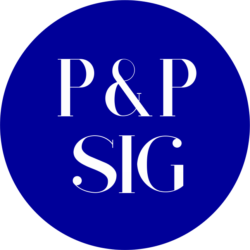Proceedings-1999; By Robert Krull; Summary by Maria Christophel (2006)
This article introduces a method for achieving balance between the people’s mental representation of actions and the display plane in which the action is represented. It explains the components of actions as procedures that brain must conform with, and provides detailed information on the performer and the spectator’s point of view as pictured on the display plane.
Improving Medical Treatment Procedures
Proceedings-1996; Judy M. Gibbs; Summary by Maria Christophel (2006)
This article provides information on the implementation of writing techniques used in a technical field to improve the documentation of procedures of another. The author describes the scenario, narrates the status of the current procedures, and names the protocols needed to enhance the document. The article provides clear examples for enhancing the protocols, summarizes the positive results of implementing the recommended protocol enhancements, and provides a sample of the complete template.
Estimating Time and Cost for Policies and Procedures Projects
Proceedings-2003; By Adrienne Escoe; Summary by Maria Christophel (2006)
This article provides guidelines for estimating the cost of developing policies and procedures for a company. It points some of the misconceptions of scope and responsibilities between the client and the technical writer that eventually surface with financial downturns. It recommends the use of a checklist and a detailed list of items that should be included in it. It guides through the main items of scoping the project, and enumerates the tasks that should be considered, time, level, etc. The author recommends the careful preparation of a list of assumptions and the consequences of the violation of such assumptions.
Documentation Project Management Resources
Intercom-June 2006; By Brenda Huettner; Summary by Maria Christophel (2006)
This article describes the twelve basic areas for managing a documentation project that must be included in the new set of standards dictated by ISO requirements. These areas include: roles and job descriptions, process, plan content, suite design, review and testing, configuration management, audience and task analysis, software and systems engineering life cycle, estimation, work br /eakdown structure, and quality metrics. The article cites several resources available for learning to manage documentation projects.
Designing Policies & Procedures Information
Proceedings-2000; By Raymond Urgo; Summary by Maria Christophel (2006)
This article discusses the five levels of concern that documentation developers should address when preparing the design of policies and procedures. Level 1: Defines P&P Architecture, and addresses the need to either use/recreate existing architecture or create a new. Level 1: Compares the united or disunited relationship between the P&P documents to be developed. Level 3: presents the extrinsic and the intrinsic approaches for development the content and the effects of combining them. Level 4: describes the Prose-based and the Structured methods for writing and the uses of both. Level 5: refers to individual units and collective units as techniques for communicating the information.
Capability Maturity Model Integration: Technical Writers Needed
Intercom-November 2005; By Faye Newsham; Summary by Maria Christophel (2006)
This article explains in detail the reasons for increasing productivity and revenue by using Capability Maturity Model Integration (CMMI). It defines Maturity and its five levels of maturity. It indicates how companies can obtain CMMI certification. It elaborates on the benefits of building a Process Assets Libr /ary. It enumerates the various reasons why the implementation of CMMI in a company will need a technical writer. Finally, the article provides suggestions on how to get involved to get started working with CMMI.
Avoiding the Content Silo Trap(TM), Enterprise Content Management
Proceedings-2002; By Ann Rockley and Jodee Clore; Summary by Maria Christophel (2006)
This article defines Silo Trap™, Enterprise Content Management (ECM), and promotes the use of a unified content strategy for managing the volumes of information produced by the various areas of a company. It describes the problematic effects of content silos such as poor communication, lack of standardization and consistency, high costs, etc. It expands the definition of content management beyond Single Sourcing into ECM for which it provides description of benefits such as maintenance speed, cost reduction, and customer relation opportunities.
Assessing the Maturity Grade of Policies & Procedures Programs
Proceedings-1998; By Raymond Urgo; Summary by Maria Christophel (2006)
This article defines the terminology and the scope of policies and procedures and introduces an Assessment Model for measuring the level of policies and procedures programs developed in a corporate structure. The model measures the grade in consideration to the functions provided by the program. It states that the model plays a synergistic role measuring the contribution of P&P to the organization.
Creating a Paradigm Shift In Managers and Professionals Who …
Proceedings-1994; By Verna Richardson; Summary by Maria Christophel (2006)
This article narrates the activities the policies and procedures writer performed to change managers’ and professionals’ view of standards. It explains some of the steps involved in the project initiation phase such as researching, recommending changes, and implementing the project. It relates the methods the writer used for marketing the project and obtaining support such as outlining the benefits to the different groups, explaining the concept of structured writing and becoming a Reader Advocate. The article enumerates the rights of readers in The Richardson Readers’ Bill of Rights. Lastly, the article relates the benefit of cross-functional teams, which were created by the acceptance to the project and the adoption of the new standards by staff, managers and professionals of the entire organization.
